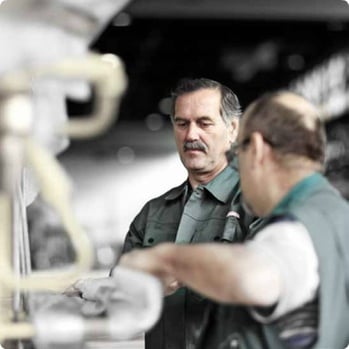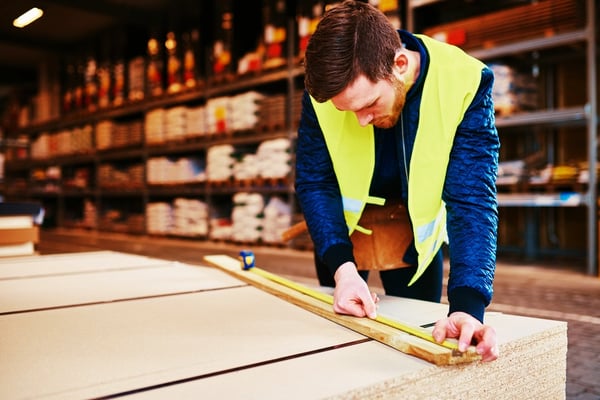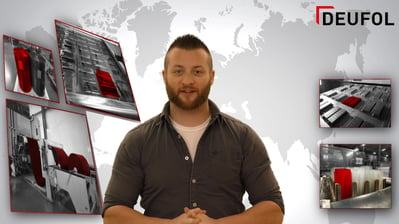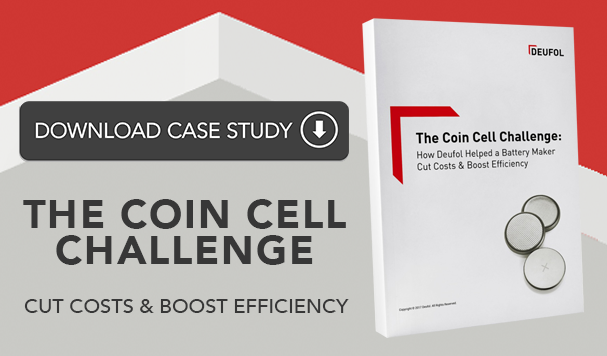Here at Deufol, we design and build all of our packaging solutions custom for each of our customers. The reason why is simple. We believe that every package has to be designed and produced for a specific set of needs and objectives. What works for one company or product may not work for another. The only way to match the best solution with each set of objectives is to implement a custom design.
Of course, you may feel that you don’t need a custom package for your parts or products. You might think that your needs and objectives are fairly standard, and that you can meet your goals with a generic solution.
Custom packaging isn’t so much an expense as it is an investment in a more cost-efficient process.
Even if you’re interested in a custom solution, you may be concerned about the price. It’s only logical to assume that custom packaging is more expensive than standardized solutions, everything else being equal. After all, custom packaging requires specialized design and engineering that may not be needed with standard packaging.
However, customized packaging can also lead to cost savings that can’t be realized with a generic solution. You can’t truly evaluate the cost of customized packaging without accounting for the savings and cost reductions you will also realize.
Below are some of the costs to consider as you compare custom packaging to other standardized options. Don’t make a final decision on your packaging solution until you examine how all your costs will be impacted.
Labor
You might assume that labor costs for custom packaging would be higher than that of a standardized solution. After all, customization requires special design, engineering, and testing. All of those things require labor.
View More: How to Cut Labor Costs [PDF] ✂️
However, custom packaging design isn’t just about the package itself. Often, we design not only the package, but also the packaging process. That means we may design a new process that implements some levels of automation, which could drive down your per-unit costs. Over time, the savings from the automation may more than make up for any upfront costs you paid for custom design and engineering.
Materials
Much like labor, a custom packaging solution may actually reduce your material costs rather than increase them. Our engineers and designers evaluate all aspects of your objectives when they create their packaging blueprint. That includes any cost objectives you may have. If your goal is to reduce your materials costs, the engineers look for material combinations that may cost less while also protecting product quality.
Deufol Engineer explains the thermoforming process (3:04)
For example, we often produce plastic packaging using a process known as thermoforming. We recently helped an automotive manufacturer reduce their materials costs and improve their quality by adjusting the mixture used in the thermoforming process. That kind of alteration can usually only be achieved through custom engineering.
Shipping Costs
One subtle, but important distinction between custom and standardized packaging is how each method impacts your shipping costs. With standardized packaging, you may not be able to optimize every inch of space within a shipping container. The size and shape of the standardized package may force you to leave some space unused inside a truck or other shipping vessel.
However, with a customized solution, you can design the package in such a way that you can fit more packages into each truck container. Your packager can take the shipping method into account and design your packages in such a way that every inch of available space in the container is used.
That means you ship more packages in each container, which means you make fewer shipments. That’s a formula for reduced shipping costs and increased profitability.
Quality
Of course, the whole reason for using packaging in the first place is to protect the quality of the product inside the container. The package’s first objective is to minimize risks and potential damage.
Quality issues always lead to increased costs. You may need to reproduce orders to replace damaged parts. You may lose trust with your customers, possibly leading to reduced orders or lost business altogether. Those are indirect, but sizable, costs that can come from using inferior packaging.

One of the main advantages of custom packaging is that it is specifically engineered to minimize the most dangerous threats your product’s face while in transit. Would moisture exposure cause catastrophic damage? Is your product vulnerable to temperature changes? What about sunlight, vibration, or other risks?
Part of the custom design process is analyzing those risks, prioritizing them, and developing strategies for minimizing potential damage. We custom engineer packages to eliminate the risk of product damage. That may mean using stronger materials, changing the shape of the package, or even rethinking the transit process.
The bottom line is that custom engineered packaging may cost more because of the upfront design process. However, that process could save you money through the elimination of quality issues. You don’t have to rework jobs or offer price cuts to customers because of defects. You boost your product quality and in turn, improve your relationships with your customers.
Custom packaging may or may not be more costly than your current standardized option. However, the only way to know is to do a thorough side-by-side comparison that accounts for both the costs and the potentials savings you will realize as a result of the custom solution. You may find that custom packaging isn’t so much an expense as it is an investment in a more cost-efficient process. ![]()







Let Us Know What You Thought about this Post.
Put your Comment Below.